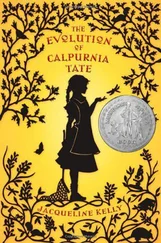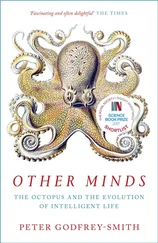None of this kind of supposition gets us very far. The only established facts are that these various centers were unfortified and clearly lived in peaceful relationships and that the whole island, by the second millennium, was a single political unit. Since this political unity was achieved without clear evidence of warfare, it is possible that it grew up in the early periods of Minoan history. The lack of fortifications would also indicate that the island had a unified control of the sea and thus could protect itself against enemies from outside.
3. Expansion
By 2300 B.C., after a thousand years of existence, Cretan society was launched on a brilliant period of commercial expansion, cultural progress, and artistic accomplishment. It had a system of numbers and writing that is still beyond our ability to understand and may remain so, especially if the language used was an unknown Asian language, as seems possible. We know about a hundred words in the language, many of them place names or names of objects used by later Greeks, but these do not seem to be related to any known languages. Words ending in "-inth," like Corinth, hyacinth, plinth, and labyrinth, or words ending in "-assa," like the Greek word for sea, thalassa, were originally Minoan. The writing, which was probably originally ideographic and rather pictographic, became increasingly linear, changing by jumps rather than by gradual development, as might be expected under a centralized political system.
The commercial prosperity of Crete continued to grow in the first half of the second millennium and was benefited rather than harmed by the Bronze Age invasions. These intrusions did not reach Crete itself, and the disturbances of the Hurrians in the Levant and the Hyksos in Egypt made it possible for Crete to expand its economic life by adding craft activities to its commercial functions. Its products, including such objects as pottery, bronze weapons, engraved gems, and jewelry, were in great demand. The prosperity of the Bohemian Bronze Age and the growing trade of the Canaanite cities of Syria created new opportunities for Cretan traders. The "palaces" at various points were rebuilt on a more elaborate scale, especially at Cnossus and Phaistos. These two cities, forty miles apart, were joined by a highway of paved cobblestones provided with bridges. At the Cnossus end of this road stood an elaborate building, probably a hotel, offering all the conveniences necessary to the weary traveler, including baths and dinner in a beautiful large hall decorated with realistic frescoes of game birds.
At Cnossus itself the "palace" was a low, flat-topped structure covering about five acres. It had a system of baths and drains, flushed with water from rain tanks on the roofs. The naturalistic mural paintings were infused with nature, the open air, sunshine, and happiness; none showed warfare or death, religion, darkness, power, or majesty as were commonly shown on the paintings of the other early civilizations. The fertility goddess was still worshiped, but the idea of her was quite changed. Gone was the pregnant earth mother, replaced by a glamorous female, slim and straight, attired in a modish dress with a low-cut neckline, a tight bodice, and a long, full skirt with many flounces. Her hair, piled in curls on her head, was fastened by gold pins. Even serious French books call her "La Parisienne."
This Cretan goddess was associated with snakes, birds, pillars, sacred trees, and the symbols of a double ax. These symbols came from Asia but were given an additional lightness and elegance in Crete. The double-ax symbol was marked plentifully on the walls of the palace. The building itself was called "Labyrinth" in the Minoan language, an expression which meant "House of the Double Ax." With its numerous rooms and long corridors on various levels, this building seemed like a maze to the naive Greek-speaking barbarians when they first saw it, since they were probably familiar with no house of more than two rooms. They took the word "labyrinth" to mean a maze where one became lost. We still use the word in this sense today.
Beyond the "Labyrinth" was the city, a center of two- and three-story rectangular houses, providing every evidence of a prosperous, happy, secular free society. This society, in the course of the second millennium, found its growth arrested by the slowing up of its rate of expansion.
4. Conflict and Universal Empire
It is very difficult for us to distinguish with any confidence the middle stages in the evolution of Minoan civilization. Our natural ignorance of the history of a society unknown through written evidence is intensified by the ambiguities to be expected in a civilization whose instrument of expansion was a socialist state. Of the general characteristics of the Age of Conflict, such as decreasing expansion, imperialist wars, class conflicts, and irrationality, we know almost nothing. There may have been class disturbances or even interurban wars, but the evidence does not allow us to say so with any assurance. Just before the middle of the second millennium, layers of ashes indicate severe fires in most Cretan urban centers, but we cannot be sure if these resulted from class disturbances or war, or from foreign invasions or even from earthquakes. The possibility of these fires coming from earthquakes seems to be reduced by the fact that fortifications and a sharp rise in the occurrence of weapons seems to have appeared briefly in the Middle Minoan period. Moreover, a couple of centuries later, the style of writing made one of its periodic changes in Cnossus, adopting a form known as Lineal B, which we now know was used to write the Greek language. As Cnossus was not sacked at that time, although it was somewhat later, about 1430 B.C., we do not believe that these Greek speakers came in as invaders, but rather that they migrated in peacefully, perhaps by serving as workers or mercenary marines for the Cretan state.
A reconstruction of the history of the Aegean area during the second millennium from the archaeological evidence on the island of Crete and also on the mainland of Greece, especially in Argos, can be made with a certain degree of confidence. The Bronze Age invaders who came down into the Balkans from the north during the first half of the second millennium were the first Greek-speaking persons to enter the area. We call them the Achaeans. On the whole, they probably came in small bands or even as isolated warriors in a peaceful way, with no desire to destroy the growing trade over the routes from Crete to the Central European Bronze Age. By military prowess and by marriage with the daughters of the matrilineal natives and Cretan colonists, these Greeks gradually established control over the area and over the commercial routes. Although the trade continued, the Achaeans extorted tribute from it and were able to use this wealth to build a barbaric, semicivilized Cretan-Achaean society. This mixed culture is generally known as Mycenaean, after its chief city at the head of the Gulf of Argos. Elsewhere, as at Athens to the northeast, the Cretans either retained or reestablished control and were themselves in a position to demand tribute. In any case, for some time a modus vivendi existed in which both peoples could enjoy the expanding commerce.
In this process the Achaeans became Cretanized and are called Mycenaeans. They seem to have gradually adopted the Cretan diet by replacing meat and animal products with the fruit of the vine, the olive tree, and the sea; they adopted the use of stone buildings and more naturalistic paintings, but the buildings were fortresses and the pictures were of war, hunting, races, or other violent scenes. They largely shifted from cremation to burial of the dead, but they kept their beards, their patriarchal social patterns, and the loose, pinned clothing of Flatland pastoralists (rather than the fitted, buttoned clothing of Crete).
Читать дальше










